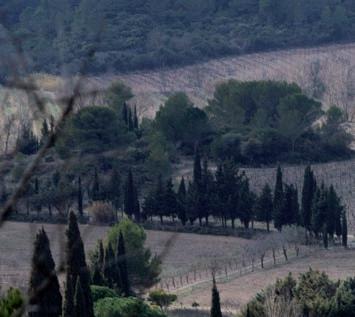
3 minute read
The World Wildlife Fund for Nature
Why Forests are important
water vapor and capturing rainfall. They also filter out pollution and chemicals, improving the quality of water available for human use. The destruction of forests has a knock-on effect on agriculture and can affect the production of the food we eat.
Advertisement
Human health is inextricably linked to forest health. Deforestation has serious consequences on the health of people directly dependent on forests, as well as those living in cities and towns, as it increases the risk of diseases crossing over from animals to humans. Meanwhile, time spent in forests has been shown to have a positive benefit on conditions including cardiovascular disease, respiratory concerns, diabetes and mental health.
Forests matter for nature
Forests are home to over 80% of terrestrial biodiversity, including 80% of amphibians, 75% of birds and 68% of mammals. Deforestation of some tropical forests could lead to the loss of as many as 100 species a day. Our ability to stop biodiversity loss is heavily dependent on our ability to stop forest loss. When we take away the forest, it is not just the trees that go. The entire ecosystem begins to fall apart, with dire consequences for all of us. Forests provide habitats for plants and animals, including some of our planet’s most iconic species like the tiger, giant panda, gorilla and orangutan. Habitat loss is one of the main causes of biodiversity loss, as land that once was forest is cleared for other uses. Forestdwelling wildlife populations (which include mammals, birds, reptiles and amphibians) have declined on average by 69% since 1970, with tropical forests such as the Amazon the worst hit.
Forests and the climate
Forests are the largest storehouses of carbon after the oceans, as they absorb this greenhouse gas from the air and lock it away above and below ground. So, it is no surprise that when we cut down or damage our forests, we release huge amounts of carbon emissions that contribute to the climate crisis.But forests are also important as they can help protect people and nature from the consequences of a warming world.
As the impacts of climate changeincluding floods and storms from rising sea levels and increased precipitationbecome more frequent and severe, forests can provide a crucial buffer for our communities. Extreme events caused by climate change, such as more frequent wildfires, limit the ability of our forests to regenerate. At the same time, deforestation contributes to climate change by increasing the risk of fires. Stopping deforestation and restoring forests is a crucial part of climate action.
Reproduced by kind permission of WWF
Further information at the WWF website: wwf.panda.org






















Boar leave the forest nightly, frequently entering the orchard. In June 2023, for the first time, a sow took her piglets (known as marcassin in French) with her. If you turn up the volume you will hear the grunts and squeaks of the weaners as they learn to select their food.
A badger visted the orchard between January and March 2023 to forage. In this clip, listen out to hear the badger cracking on snail shells using its strong teeth, The badger is usually seen ambling unfussed, but at the end of this clip you will see it speed up when surprised by the sudden clanging of the church clock’s bell.

Beech marten
The beech marten is the mainland European version of the pine marten. A pair of them regularly come from the forest and enter the orchard next door. The beech marten moves rapidly, using bouncing steps to propel itself forward. You can see these movements in this short video clip. I have observed that the beech marten goes to the orchard more frequently in Winter than at any other time of the year. I also note that the beech marten never enters the garden when other animals might be around; not even domestic cats.




































The owl’s cry
In this recording from 14th June 2023, made at about 22h00, you hear an owl crying and the wind blowing hard. These are moments that make us remember the forest tales that frightened us as children. Stories of Hansel and Gretl, Snow White or Sleeping Beauty. While I was working on this project, planning for personal safety in the wild areas of the hills and forest was very important.
















The nightingale
The sound of a nightingale singing in the forest in early Summer is one of Nature’s most perfect sounds.I recorded this bird at midnight on the 8th June 2023.












The above typology contains photographs of the first section of pine forest to return after the great deforestation. Unlike areas of forest which are self-regenerating, this earlier section was planted by children of the village of Coustouge during a series of planting sessions between about 1925 and 1928. The photographs were taken in May and June, 2023, from the top floor of my house in the village.
The video was made on 29th June 2023, and captures something of the strength of a Mediterranean storm. It shows the power of the wind and rainwater, indicating their abilithy to wash away the topsoil on the hillsides as happened in the 19th century once the trees had been cut down










All
For their invaluable support and guidance during this project, I should like to thank the following people:
Wendy McMurdo
Jesse Alexander
Paul Clements
Laura Hynd
Karen Aneiro
Alan Conteh
Emma Hart
Peter Bushby
The team at Newspaper Club
WWF London
The estate of Ken Towner
Chris Hewitson contact details chrishewitson@me.com
+33 (0)6 03 71 94 96 postcards


